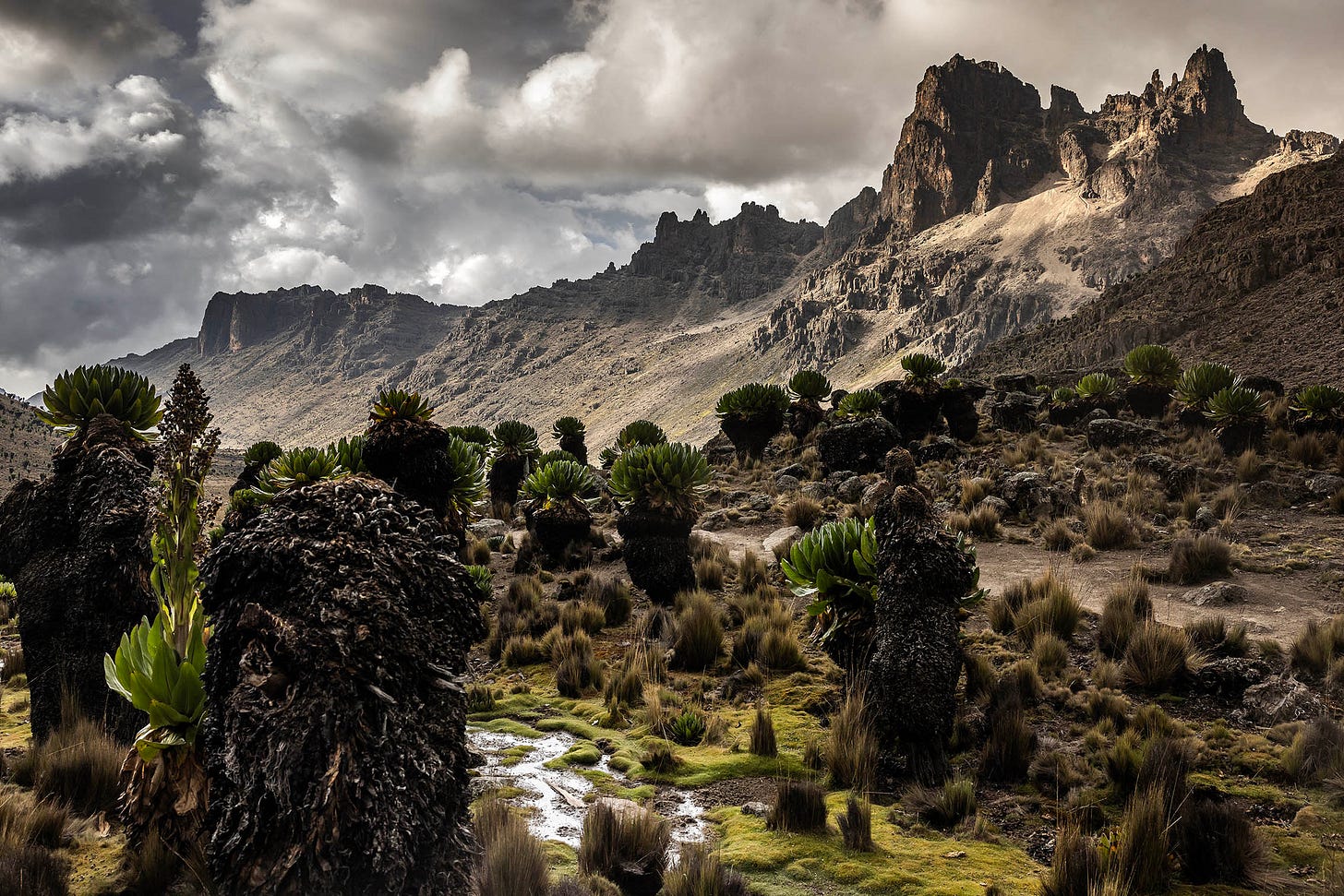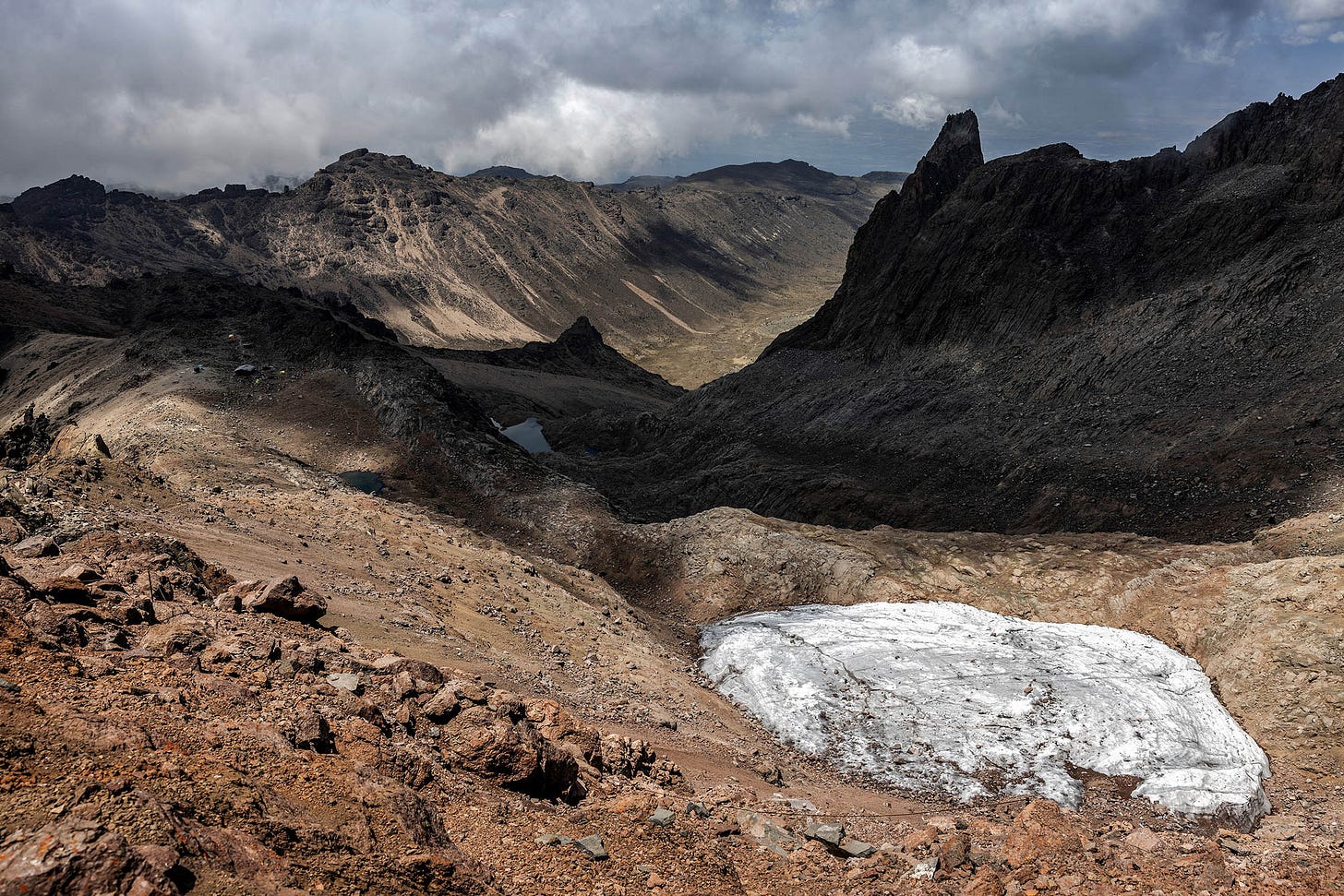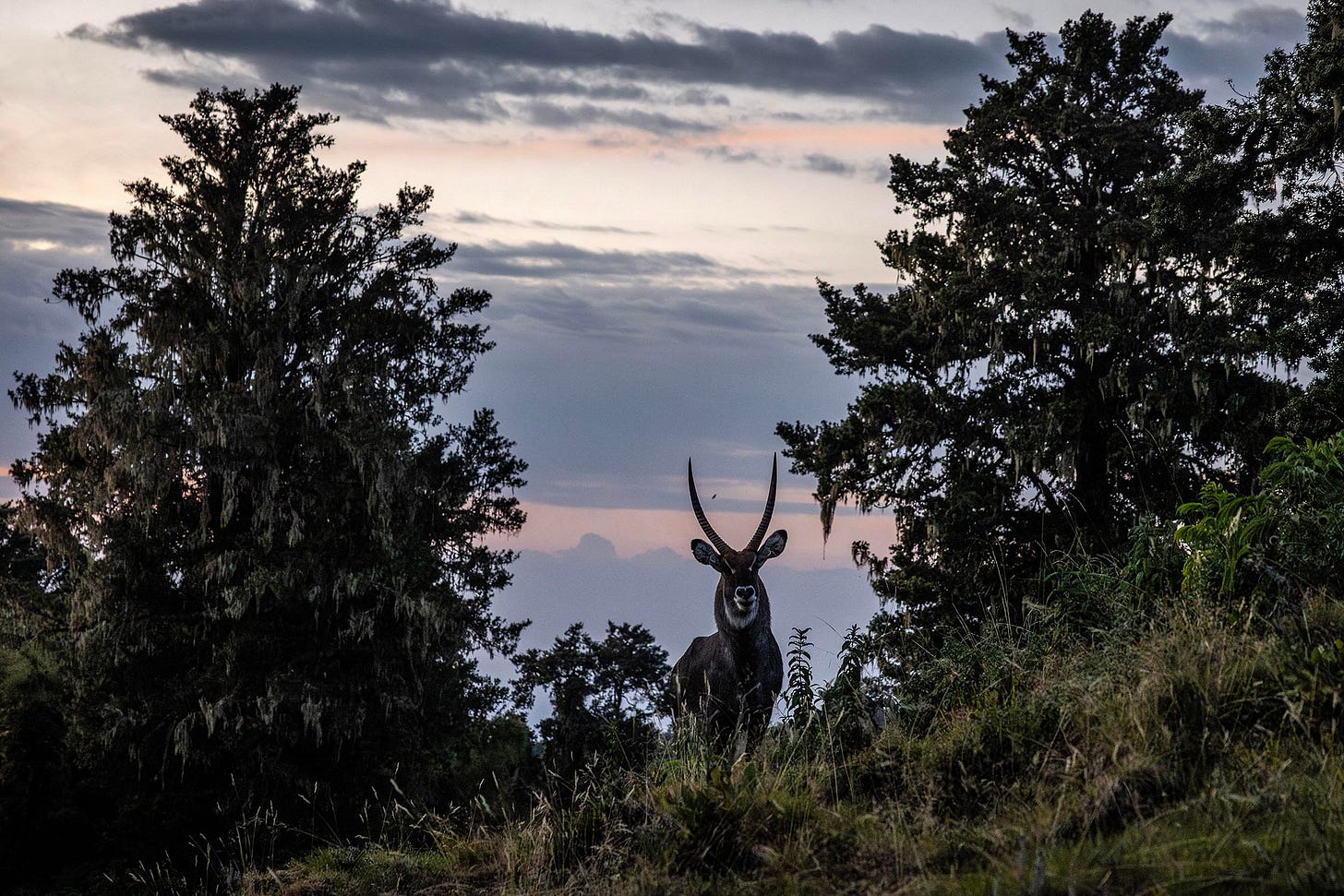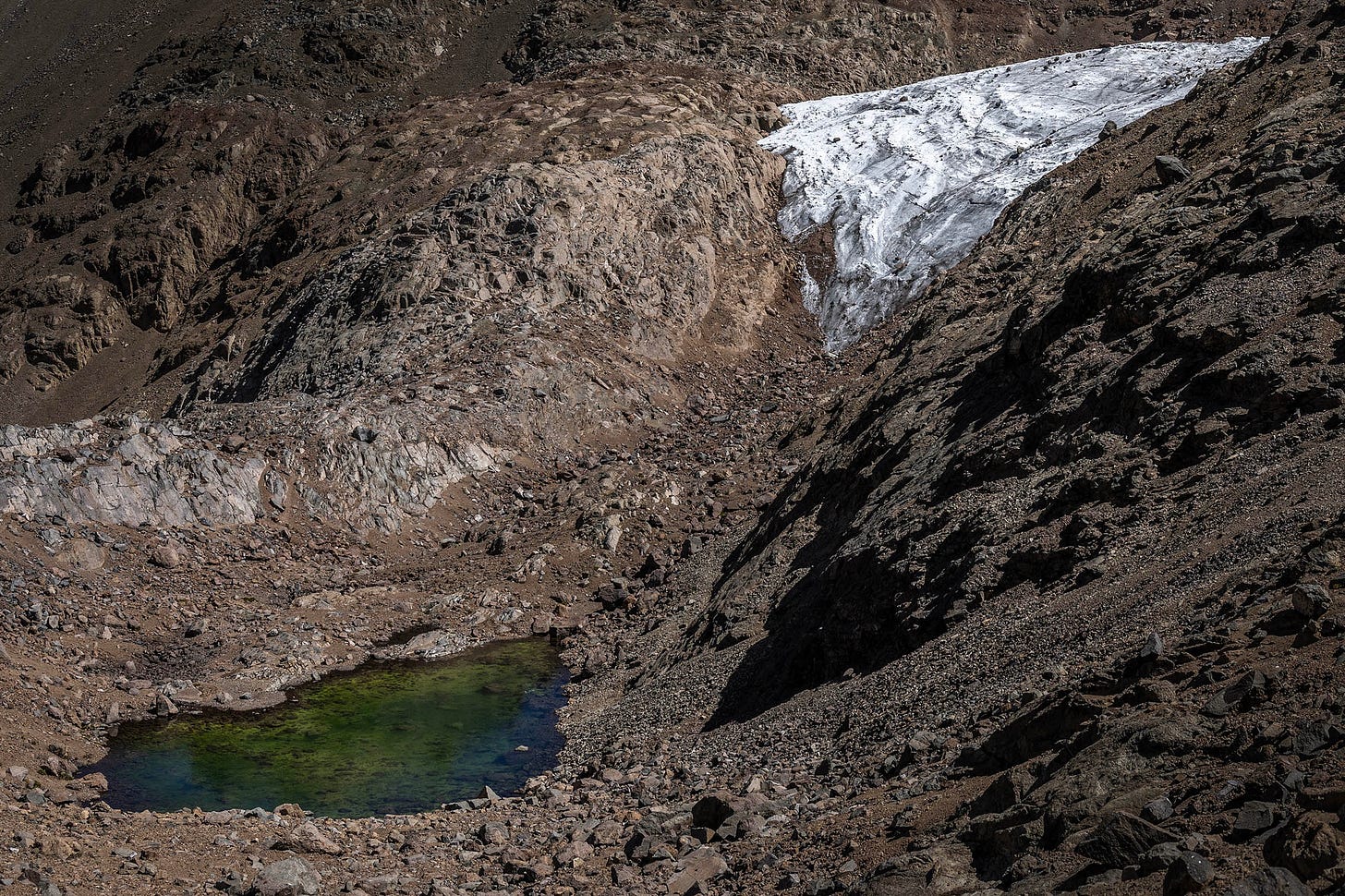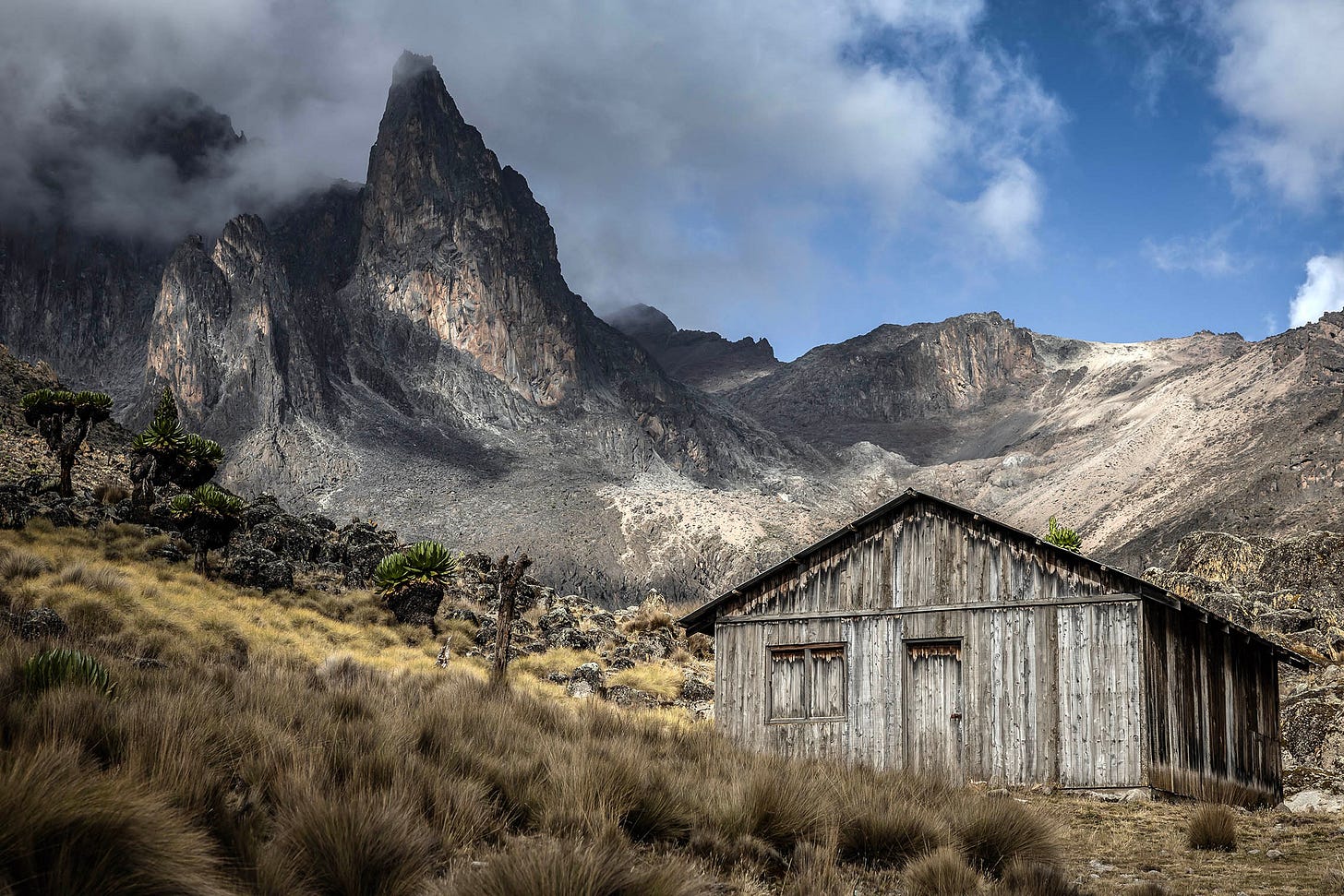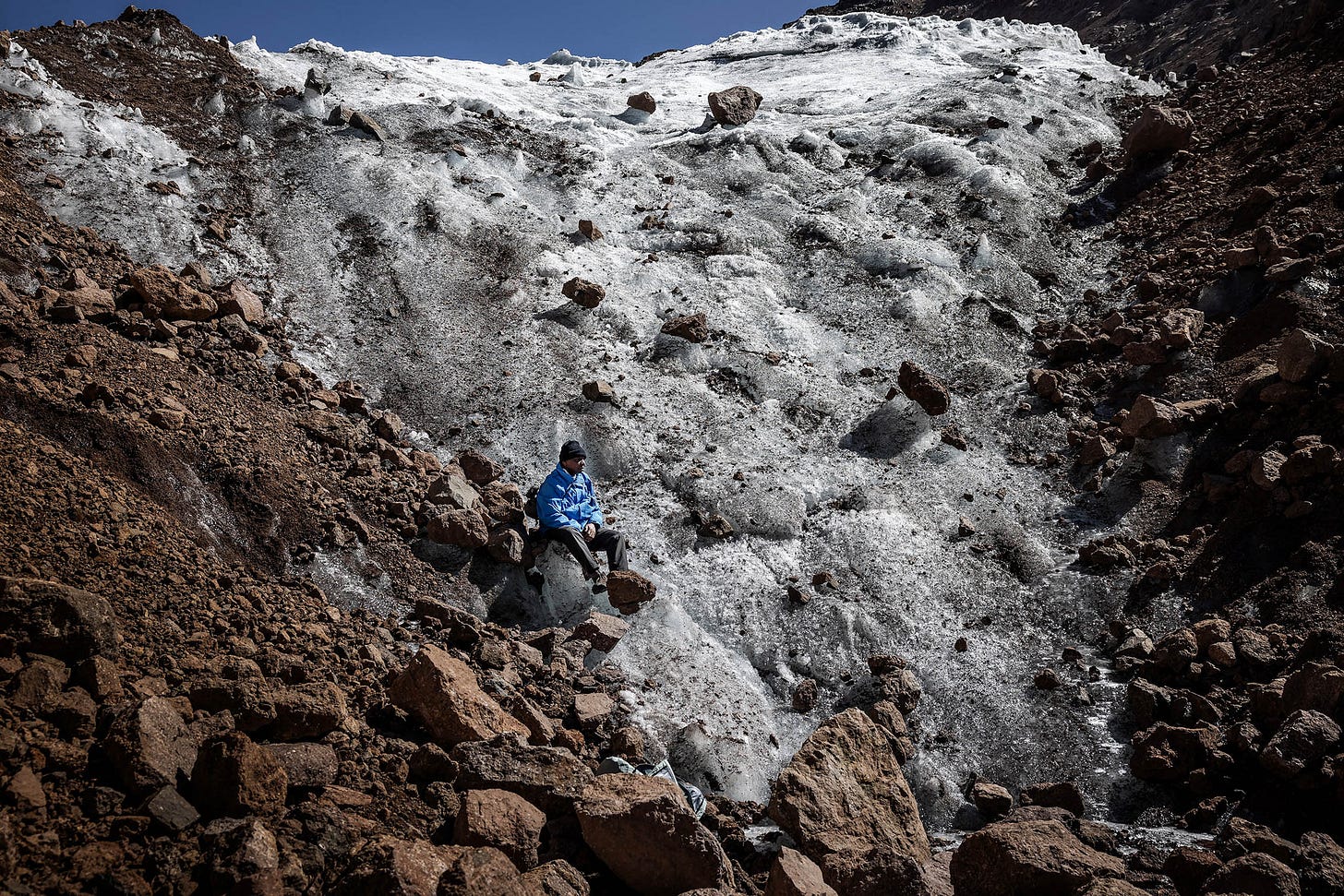Photo Essay: Breaking the ice
Lewis Glacier, Mount Kenya's most studied, has lost over 90% of its mass since 1934. This dramatic loss is driven by rising temperatures and declining rainfall, both tied to climate change.
All Photos: Luis Tato/AFP
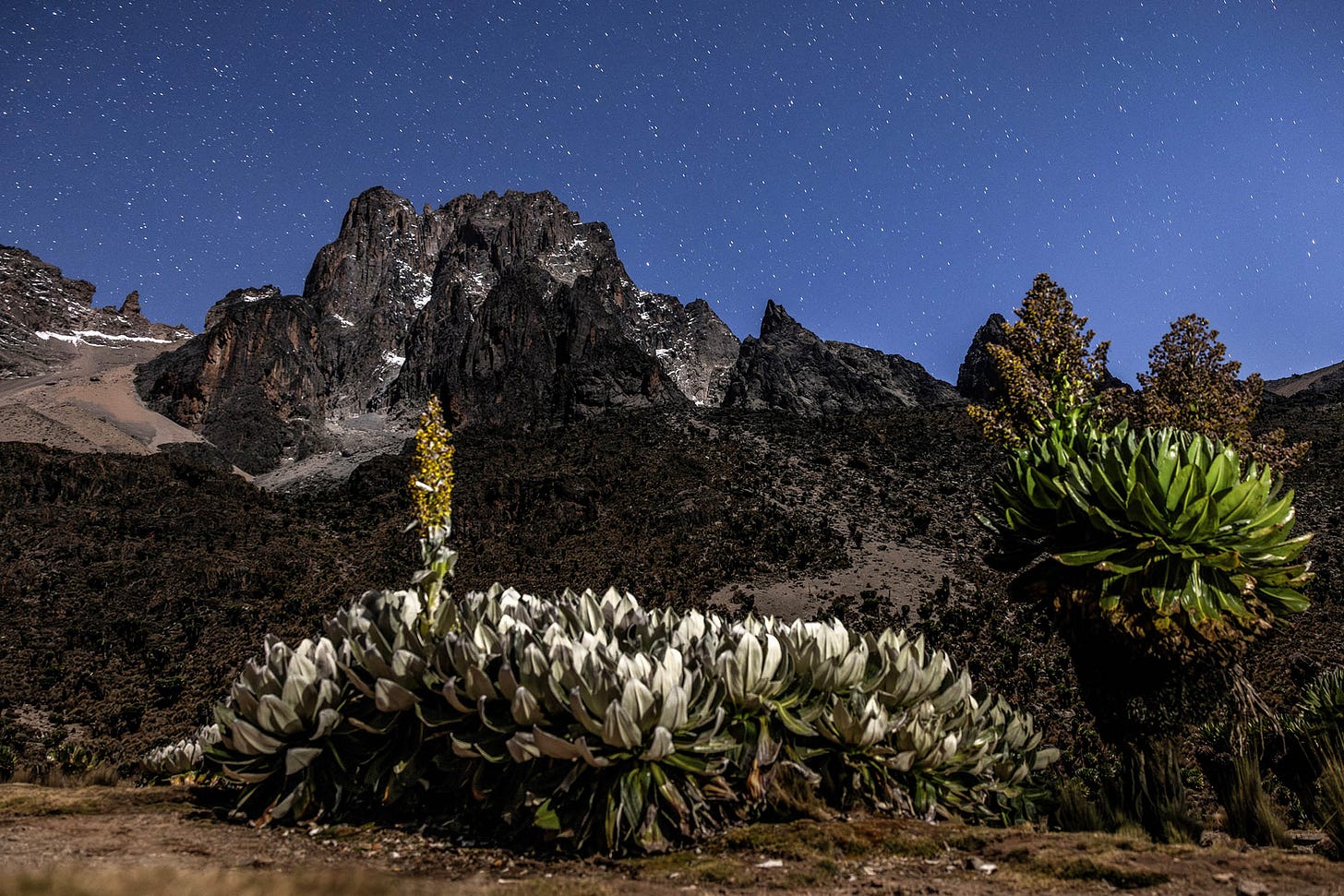
Mount Kenya, Africa’s second-highest peak, is one of only a few mountains with glaciers on the continent. But the glaciers are shrinking, and they are shrinking fast. Scientists fear that it could turn ice-free as soon as 2030, which would make it one of the first to do so in modern times.
Lewis Glacier, the most studied, has lost over 90% of its mass since 1934, according to the World Glacier Monitoring Service. This dramatic loss is driven by rising temperatures and declining rainfall, both tied to climate change.
The mountain is an ancient extinct volcano, and its peak measures 5,199m. Around it is Mount Kenya National Park, a 700km2 world heritage site that is home to delicate ecosystems. The glaciers’ disappearance threatens water sources for millions, impacting farming, hydroelectric power and biodiversity. The loss also endangers local economies that depend on agriculture and ecotourism tied to the mountain’s unique ecosystem.
